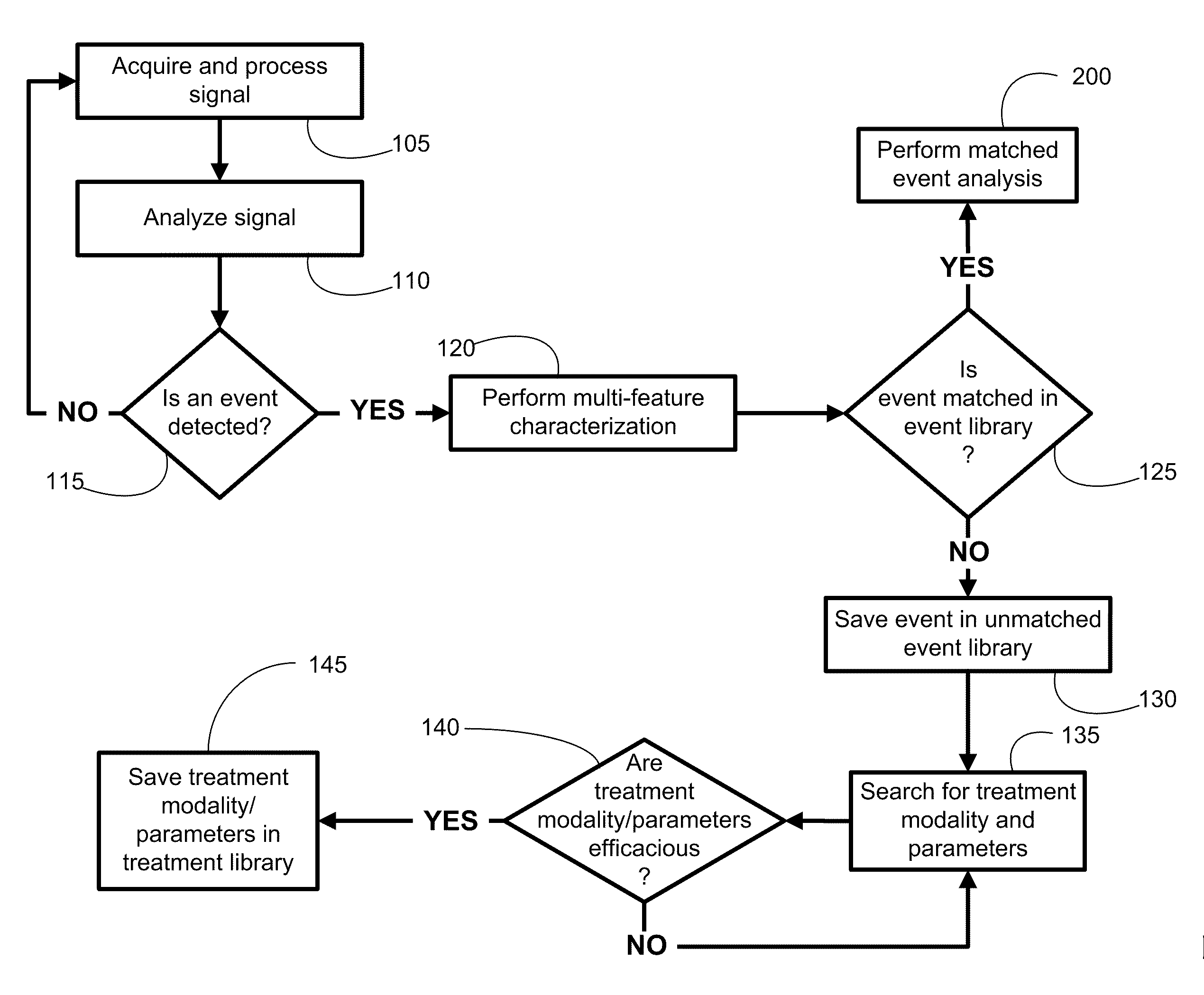System and apparatus for automated quantitative assessment, optimization and logging of the effects of a therapy
a technology of automated quantitative assessment and optimization, applied in the field of system and apparatus for automated quantitative assessment, optimization and logging of the effects of a therapy, can solve the problems of poor quality of life, optimization strategies, and difficulty in defining treatment effects, etc., to achieve optimal therapy effect, optimize therapy effect, and high probability of blockage
- Summary
- Abstract
- Description
- Claims
- Application Information
AI Technical Summary
Benefits of technology
Problems solved by technology
Method used
Image
Examples
Embodiment Construction
[0038]The degree of morphological stereotypia (similarity) among waves (denoted herein as rhythmicity) that make up seizures is an indirect measure of neuronal synchronization within a region and between regions. The occurrence of trains of waves with highly similar waveforms (frequency and amplitude) within a brain region or between brain regions may be interpreted as an indication that these waves are generated by highly similar and phase-locked generators. Rhythmicity is a novel measure of waveform stereotypia and indirectly of the spatio-temporal behavior and synchronization of those waveforms' generators. Rhythmicity may be measured using the autocorrelation function (ACF) of a (possibly pre-filtered) linearly detrended signal; normalization by total signal power in the window is performed so that the ACF has a value of 1.0 at zero lag. The ACF may be written into a computer program for on-line (real-time) automated quantification and triggering of a therapy.
[0039]Neuronal rhyt...
PUM
 Login to View More
Login to View More Abstract
Description
Claims
Application Information
 Login to View More
Login to View More - R&D
- Intellectual Property
- Life Sciences
- Materials
- Tech Scout
- Unparalleled Data Quality
- Higher Quality Content
- 60% Fewer Hallucinations
Browse by: Latest US Patents, China's latest patents, Technical Efficacy Thesaurus, Application Domain, Technology Topic, Popular Technical Reports.
© 2025 PatSnap. All rights reserved.Legal|Privacy policy|Modern Slavery Act Transparency Statement|Sitemap|About US| Contact US: help@patsnap.com



